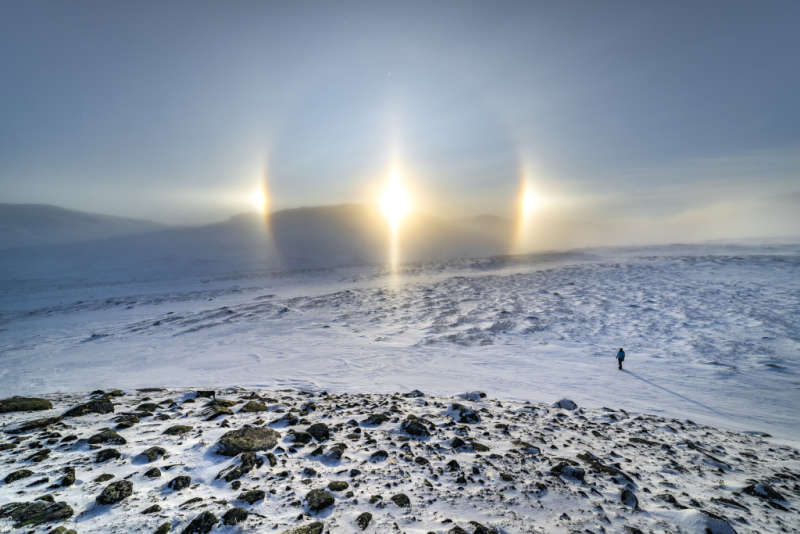Credit & Copyright: Felipe Menzella
Explanation:
Three suns seem to hug the horizon in this otherworldly winterscape.
But the evocative scene was
captured during a February 3rd snowmobile exploration
of the mountainous region around Abisko National Park, northern Sweden,
planet Earth.
The two bright spots on either side of
Earth's Sun are parhelia
(singular parhelion),
also known as mock suns or sun dogs.
The parhelia are caused by
hexagonal
ice crystals
suspended
in the hazy atmosphere that reflect and refract sunlight.
Commonly seen in winter and at high latitudes, the bright parhelia
lie along the visible 22 degree
ice halo of the Sun.
1999 2000 2001 2002 2003 2004 2005 2006 2007 2008 2009 2010 2011 2012 2013 2014 2015 2016 2017 2018 2019 2020 2021 2022 2023 2024 2025 |
Yanvar' Fevral' Mart Aprel' Mai Iyun' Iyul' Avgust Sentyabr' Oktyabr' Noyabr' Dekabr' |
NASA Web Site Statements, Warnings, and Disclaimers
NASA Official: Jay Norris. Specific rights apply.
A service of: LHEA at NASA / GSFC
& Michigan Tech. U.
|
Publikacii s klyuchevymi slovami:
lozhnoe solnce
Publikacii so slovami: lozhnoe solnce | |
Sm. takzhe:
Vse publikacii na tu zhe temu >> | |
